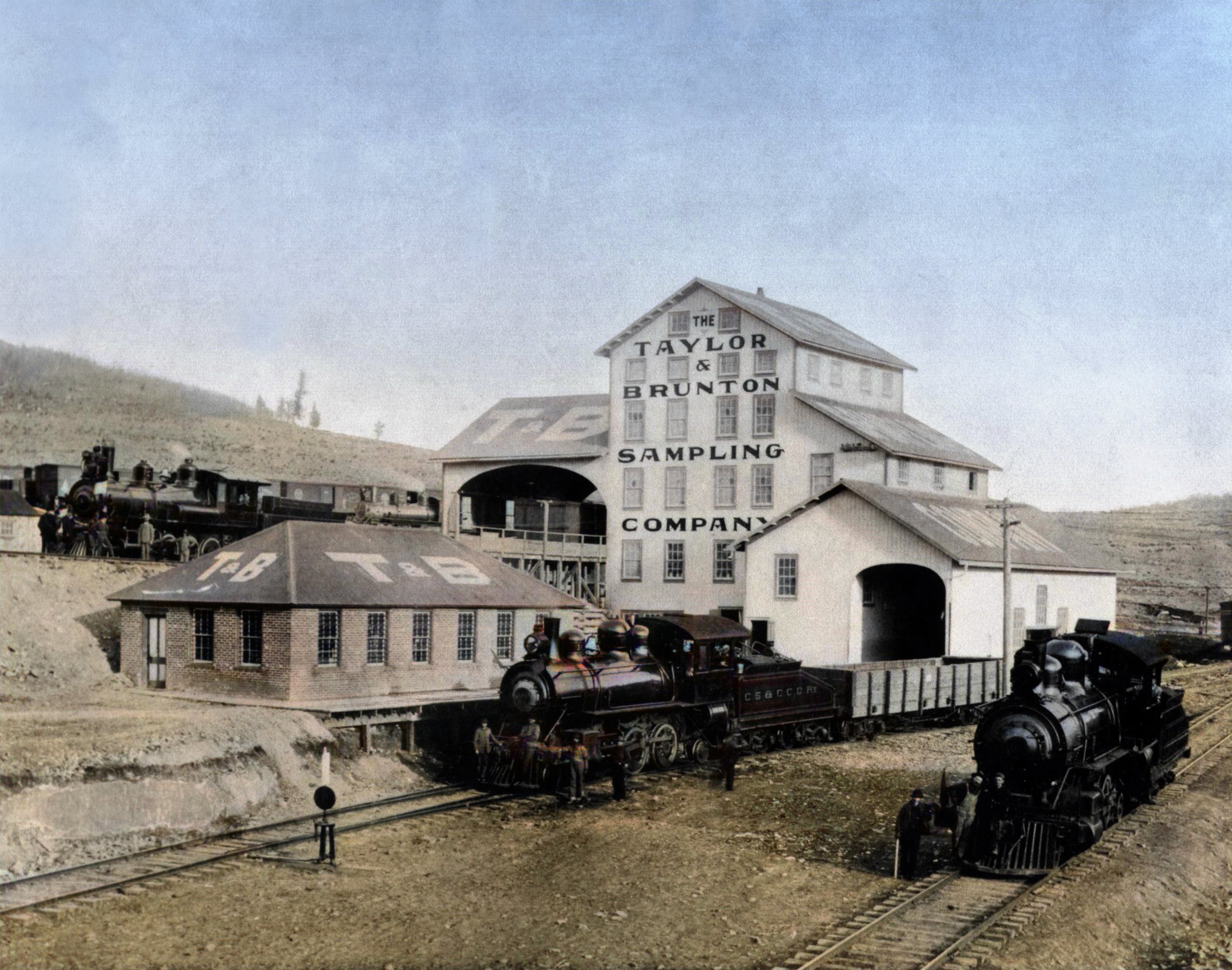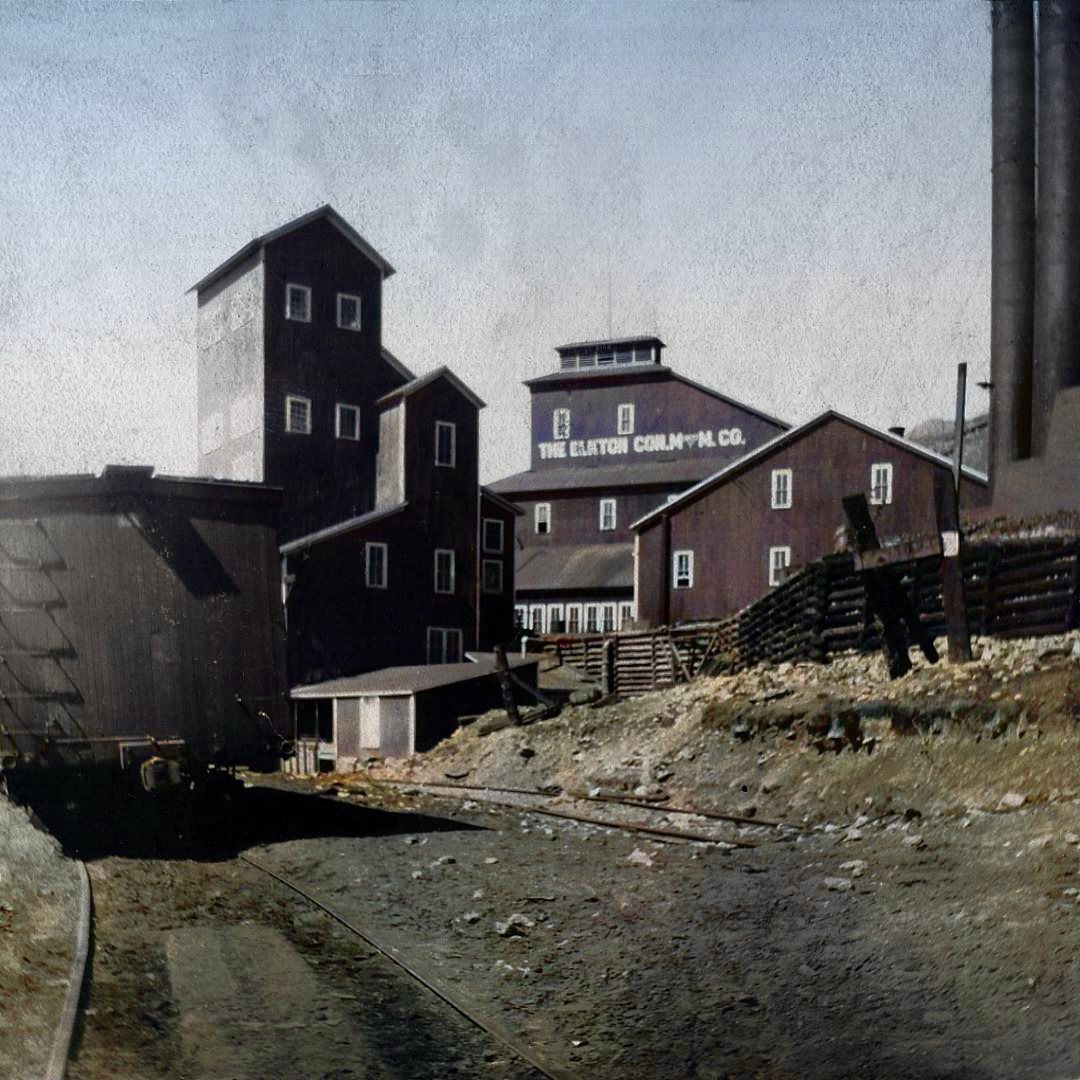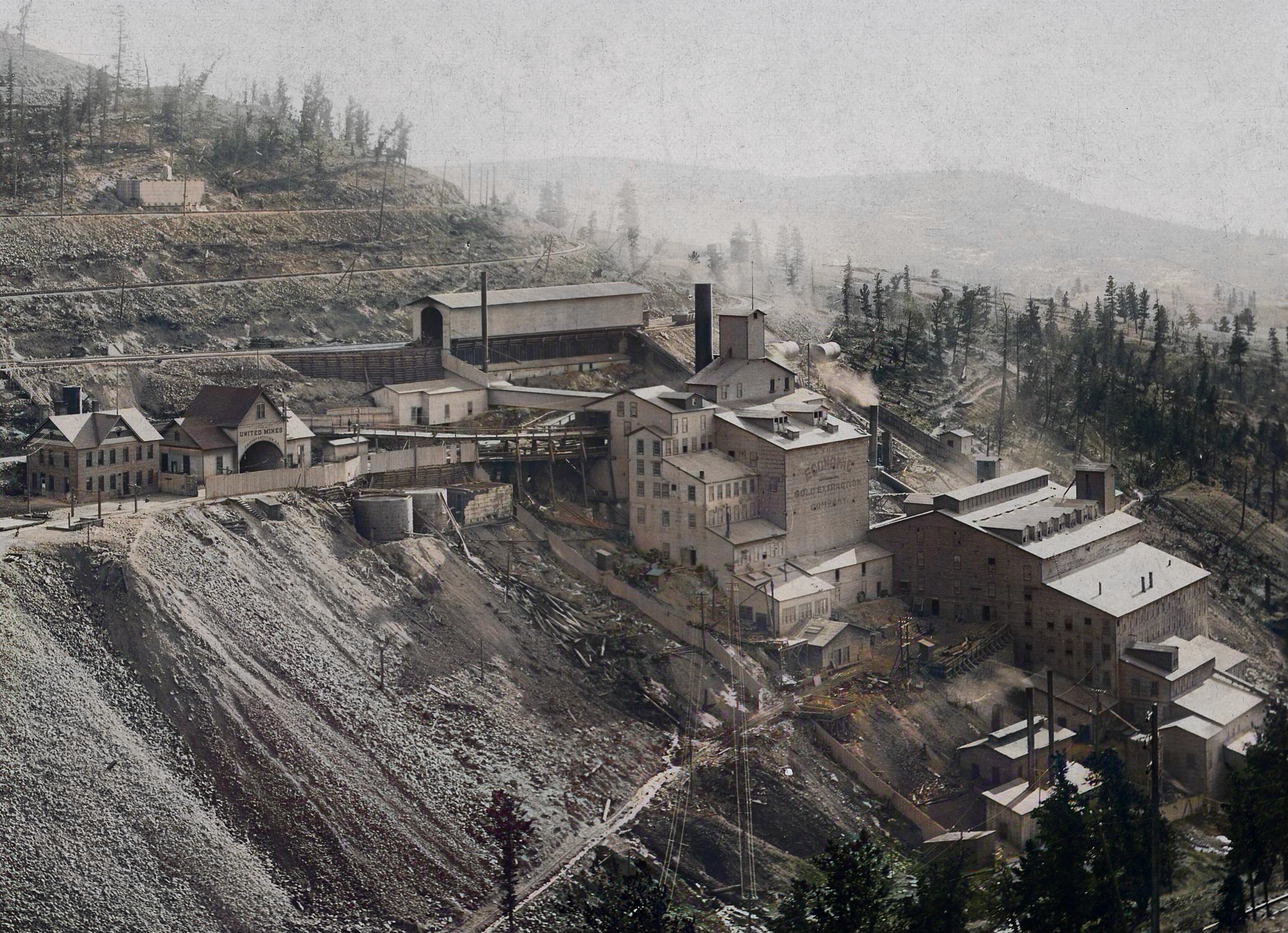-> HathiTrust Digital Library Site; Link to First Page.
While Source had two pics, I have used the same pics, and added more from my collection
Much has been said and written with regard to proper methods of ore sampling in order to get a sample which shall accurately represent the value of the whole.
In this article it is aimed to give the methods as actually practiced in one of the greatest gold camps on earth, and one where sampling is of particular importance, from the fact that very little of the ore is treated at the mines, but is shipped to outside points for reduction.
No particular attempt will be made to discuss the accuracy of the methods employed, but simply to give the methods and leave the discussion for others.
There are at present in operation in the district five sampling works treating commercial ore, besides the samplers of the different mining and milling companies. The different schemes employed by these five companies will be given and also the practice at one mill, the Economic chlorination mill, and one mine, the Elkton.
The C. C. or Black Sampler.
The ore is taken from the cars in a wheelbarrow and dumped directly into a crusher of the Blake type, from which it is elevated to a revolving screen with one-inch openings. The oversize from this screen is sent to rolls and the product of the rolls again returned to the screen, so that the ore, as it goes to the samplers, is all reduced to one-inch size, or less.
The Vezin automatic sampler is employed.
At the Black sampler each machine takes out one-fifth of the ore, that which passes to the second sampler first going through a revolving cylinder with interior projecting arms, which serves to mix the sample. No intervening reduction in size takes place. From the second sampler the part taken out, which is now one twenty-fifth of the original, is sent to the sampling floor.
Here it is piled by shovels into a cone, each shovelful being placed on top of the cone and allowed to run down the sides. Four wheelbarrows are now placed around the pile and, going around the pile, alternate shovels are thrown into the barrows and into four piles around the original central pile. Starting now with these four piles alternate shovels are delivered to the barrows and to a new central pile.
In this manner the sample is reduced to one wheel-barrowful. This is then run through a pair of rolls set tight, and the sample reduced to about 50% of the ordinary method of coning and quartering. This is then dried and passed through a coffee mill, after which it is reduced to the required bulk by riffles and then bucked to 100 mesh.
Scheme of Sampling at the Black Sampler:
The Rio Grande Sampler*1.
The same automatic samplers (Vezin) are employed here as at the Black sampler, but one more is used, and the crushing before the last two samplers is to one-half inch. The product here sent to the sampling floor is one one hundred and twenty-fifth of the original, and is reduced by the ordinary method of coning and quartering.
It is to be noted that here again two cuts are made without intermediate crushing, the portion from one sampler simply passing through an intervening mixer.
Scheme of Sampling at the Rio Grande Sampler:
The Eagle Sampler.
The same automatic samplers (Vezin) are used as before, and one-fiftieth of the original is sent to the sampling floor. Here it is coned and quartered, but not reduced by this method. The coning and quartering serves simply to mix the sample.
Opposite quarters are now taken and placed together, so that from this point two separate samples are treated. These are reduced by a large set of riffles to forty-mesh each, and from this on the operation is the same as the Black and the Rio Grande.
Scheme of Sampling at the Eagle Sampler:
The Taylor & Brunton Sampler.
The Taylor & Brunton Company have two samplers in operation in the district. The below is the scheme of operations as practiced at the newer works.
This plant is the latest one erected in the district and has been in operation about two years. The method as practiced at the older plant is not given, and differs from the above more in the matter of the handling of the ore than in the process of sampling.
The automatic sampler employed is what is known as the Brunton sampler.
It will be noticed that four samples, each taking out one-fifth, are employed, so that part going to the sampling room is only one six hundred and twenty-fifth of the original. After mixing on the floor the sample is reduced by split shovel to about two shovelsful and then proceeded with as in the case of the other mills described above.
Scheme of Sampling at the Taylor and Brunton Sampler:
The Elkton Sampler.
The method here does not differ greatly from that at the Rio Grande. A reduction in size takes place before each of the automatic samplers, but none between the last sampler and coning and quartering.
Scheme of Sampling at the Elkton Mine:
The Economic Sampler.
One two hundred and fiftieth part is here sent to the sampling room. As with the Elkton sampler, no reduction in size is made between the last sampler and coning and quartering.
Scheme of Sampling at the Economic Mill:
Automatic Sampler illustration
_fig03-automatic-sampler_web.png)
The automatic sampler employed is illustrated in Fig. 3. The sampler revolves upon "A" as an axis and the ore stream enters through the chute "C." The main portion of the ore passes to "D" and the sample is diverted to "E" by the openings at "B and B."
The openings, "B and B," are arranged so as to catch the whole of the ore stream while passing under the ore chute.
In the mills visited the three different types of automatic samplers, as described above, are the only ones used, and it will be noted that the principle involved to all of them is the same. That is, the whole of the ore stream is diverted for a portion of the time, and if any particular merit is to be attached to one above the other it would seem to be merely in the matter of ease and economy of operation, rather than in sampling principles involved.
In spite of adverse criticism as to the method of coning and quartering, it will be noted that the method is used in all but two of the mills enumerated, and in one of these is used for mixing the sample, but not for reducing the bulk. Among the millmen spoken to upon the subject, the general opinion seemed to be that the method was as accurate as any.
The method, after coning and quartering, or the process employed in its place—split shovel in the case of the T. and B., and riffles at the Eagle sampler—is practically the same in all of the mills, and differs only to detail.
? I have not seen the name C. E. Wolcott before it appears on this article, but I have seen G. E. Wolcott many times. Hence I assume this was an error when setting the print for this article and a G was read as a C and used due to that.
*1 I know of two samplers with the name Rio Grande Sampler at one time, and this article gives no info to help figure out which one this is about. There was a Sampler in Victor which had connections to both the Midland Terminal and the Florence & Cripple Creek railroad, and there was one in Cripple Creek along the Florence & Cripple Creek railroad as it enters the town.
![Photo by: H. & H. Studio [Hileman & Hill] | Click for larger view, more info The Black Sampler or Cripple Creek Sampler of the Cripple Creek Sampling & Ore Co., Up on Victor Pass](/04library/postcards/p-00346_n29_cc-sampler-bull-hill_h-n-h-studio_colored.jpg)
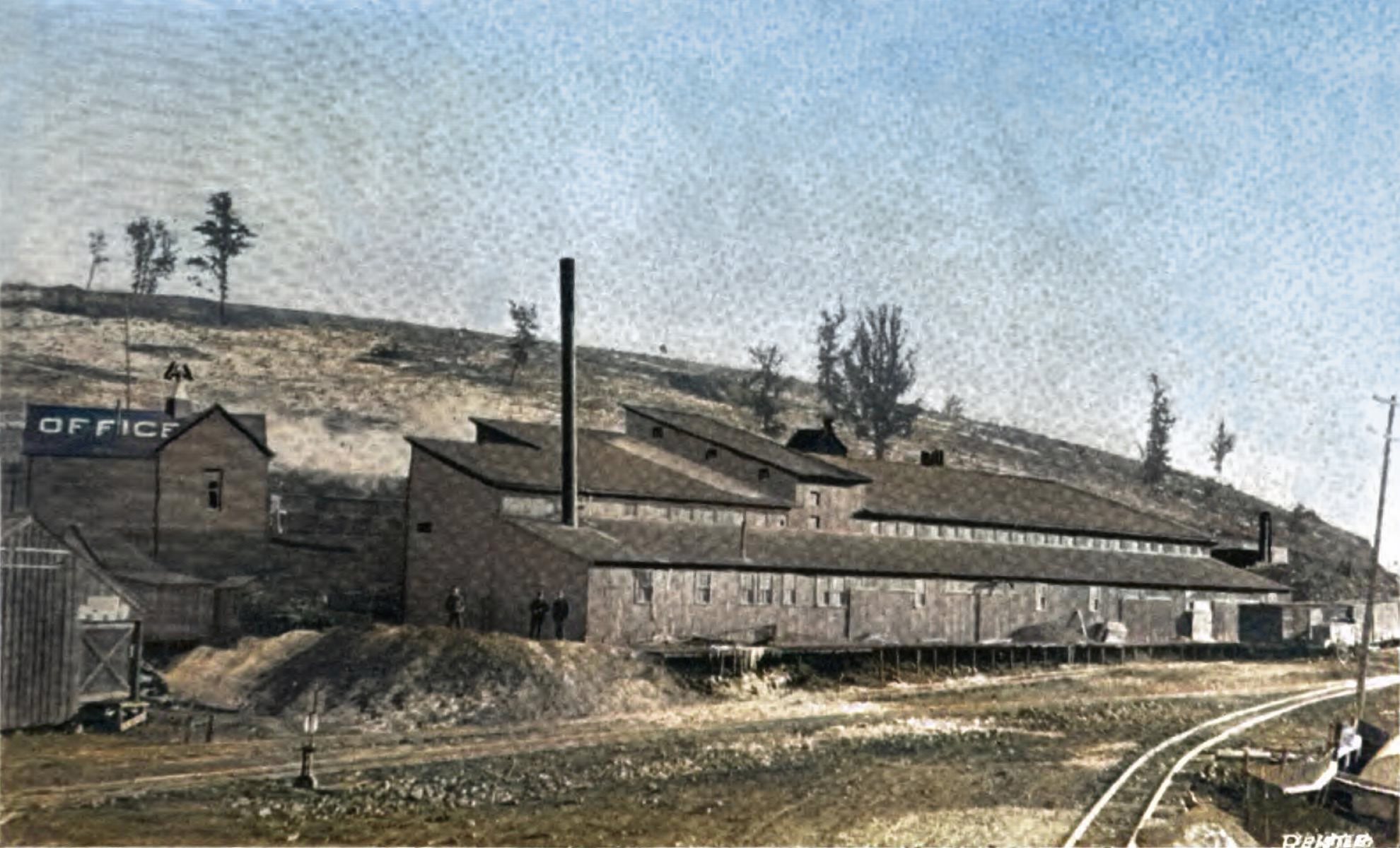
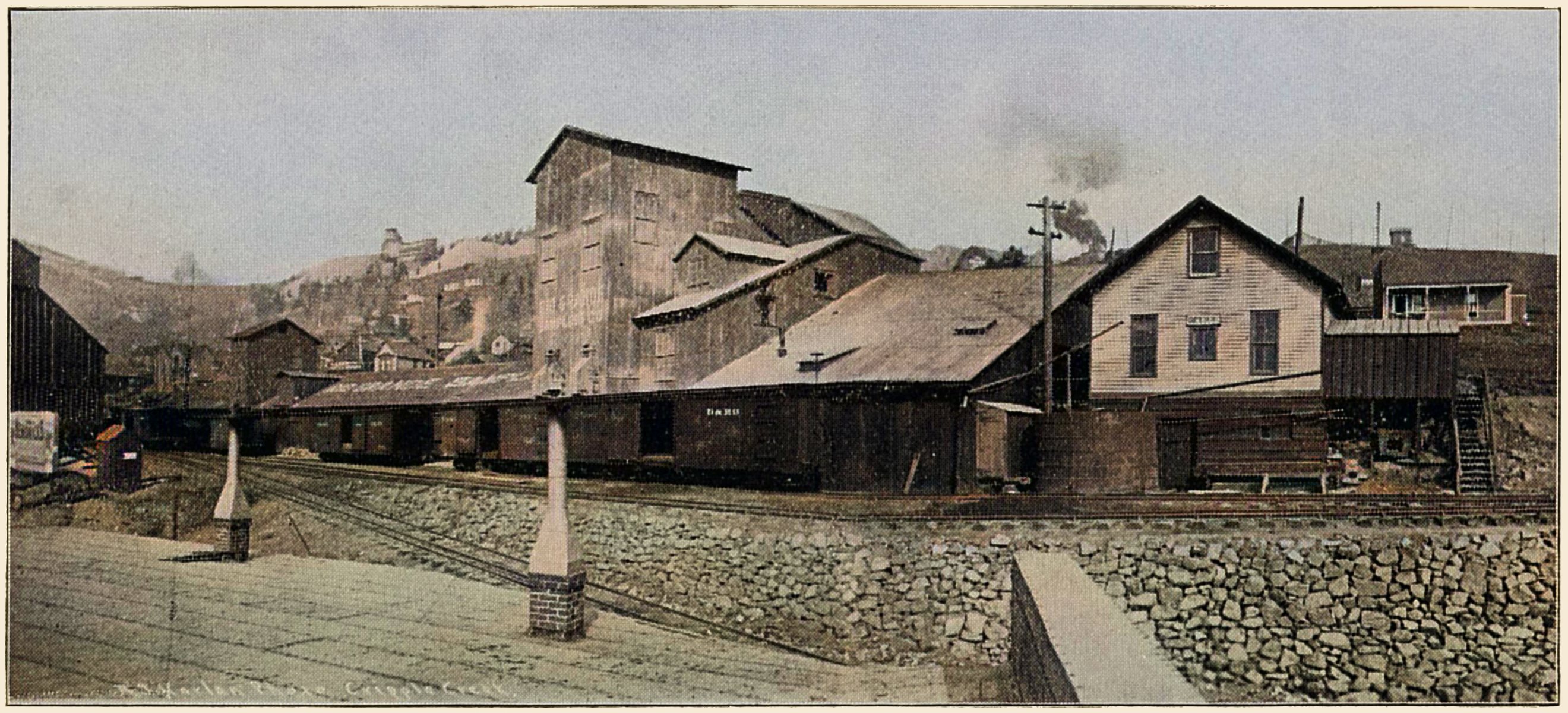
_crpd-eagle-sampler_12d_colored.jpg)
